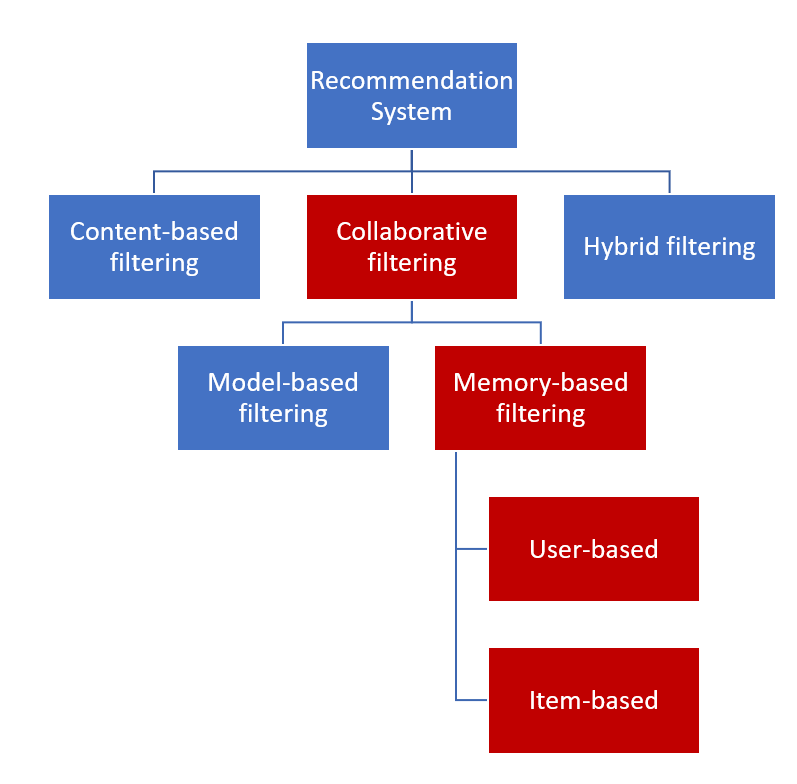| ID | M1 | M2 | M3 | M4 | M5 | M6 | M7 | M8 | M9 |
|---|---|---|---|---|---|---|---|---|---|
| C1 | 4 | 1 | NA | NA | 3 | 3 | 4 | 5 | NA |
| C2 | 4 | NA | NA | NA | NA | NA | NA | NA | NA |
| C3 | 5 | NA | NA | NA | NA | NA | NA | NA | NA |
| C4 | 3 | NA | 1 | 4 | NA | 4 | 5 | NA | NA |
| C5 | 4 | 5 | NA | NA | NA | NA | NA | NA | NA |
| C6 | 3 | NA | NA | NA | NA | NA | 4 | 4 | NA |
| C7 | 3 | NA | NA | NA | NA | 2 | 4 | NA | 3 |
| C8 | 4 | NA | NA | NA | NA | NA | NA | NA | NA |
| C9 | 4 | NA | NA | NA | NA | NA | 3 | NA | NA |
| C10 | 3 | NA | NA | NA | NA | NA | NA | NA | NA |
Collaborative Filtering
Department of Statistics, Faculty of Applied Sciences
University of Sri Jayewardenepura, Sri Lanka
What is collaborative filtering?
- popular recommendation techniques, often used in recommendation systems to provide personalized recommendations to users.
Why use personalized recommendation systems?
Users are more likely to make purchases or take action when the recommendations align closely with their tastes, leading to higher conversion rates.
Personalized recommendations encourage users to spend more time on the platform, as they are more likely to discover things they enjoy or need.
Cross-Selling and Upselling: Recommendation systems can suggest complementary products, encouraging users to buy more or upgrade their selections.
Why use personalized recommendation systems?
Users are more likely to return to platforms where they feel understood and catered to, which increases retention rates.
users quickly find what they’re looking for by filtering out irrelevant option.
These systems help users discover new content or products they might not have found on their own but are highly likely to enjoy.
Sales Boost: Personalized recommendations drive more sales by surfacing items that users are likely to purchase, which can increase average order value (AOV) and overall revenue.
User-based Collaborative Filtering
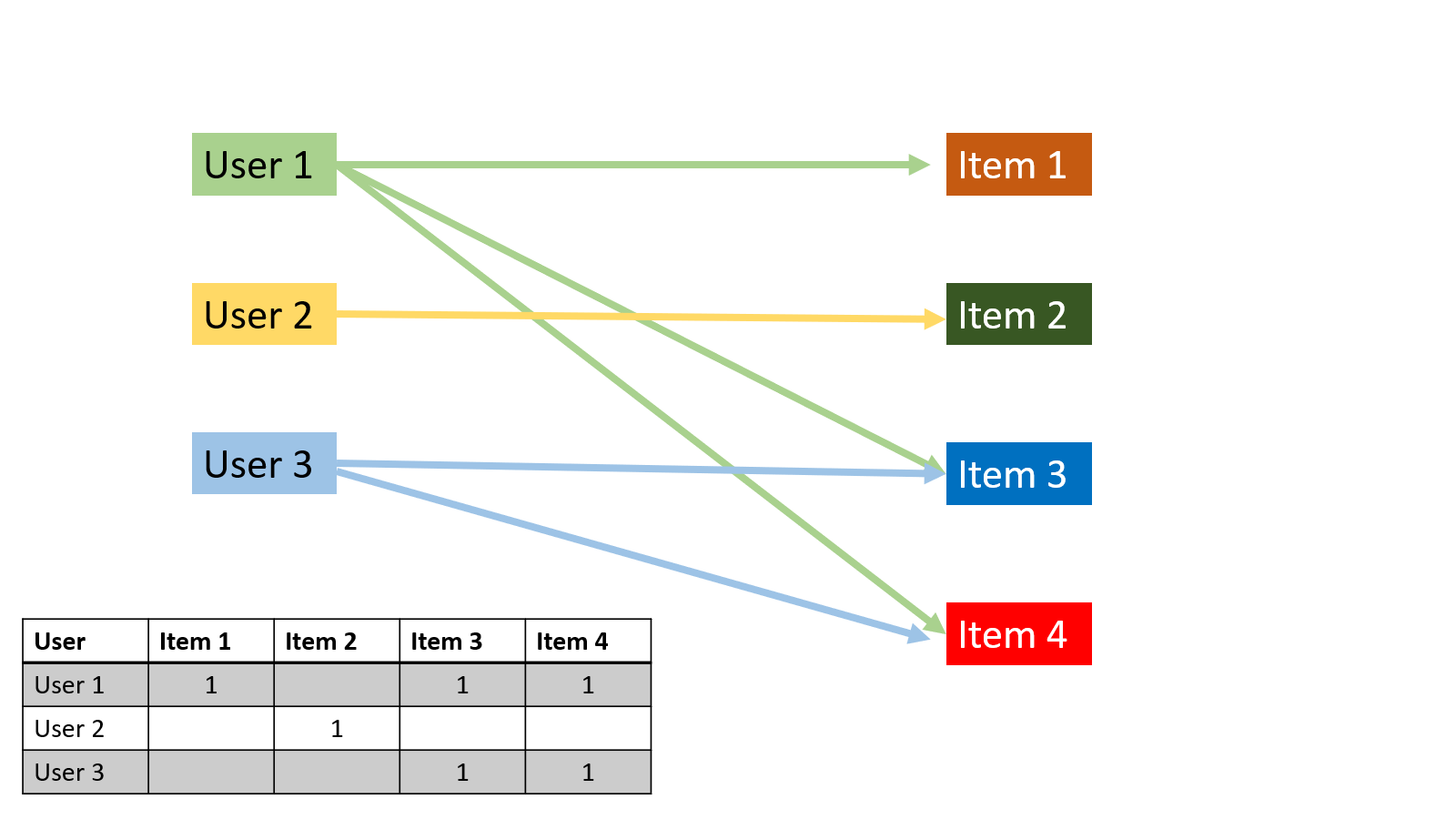
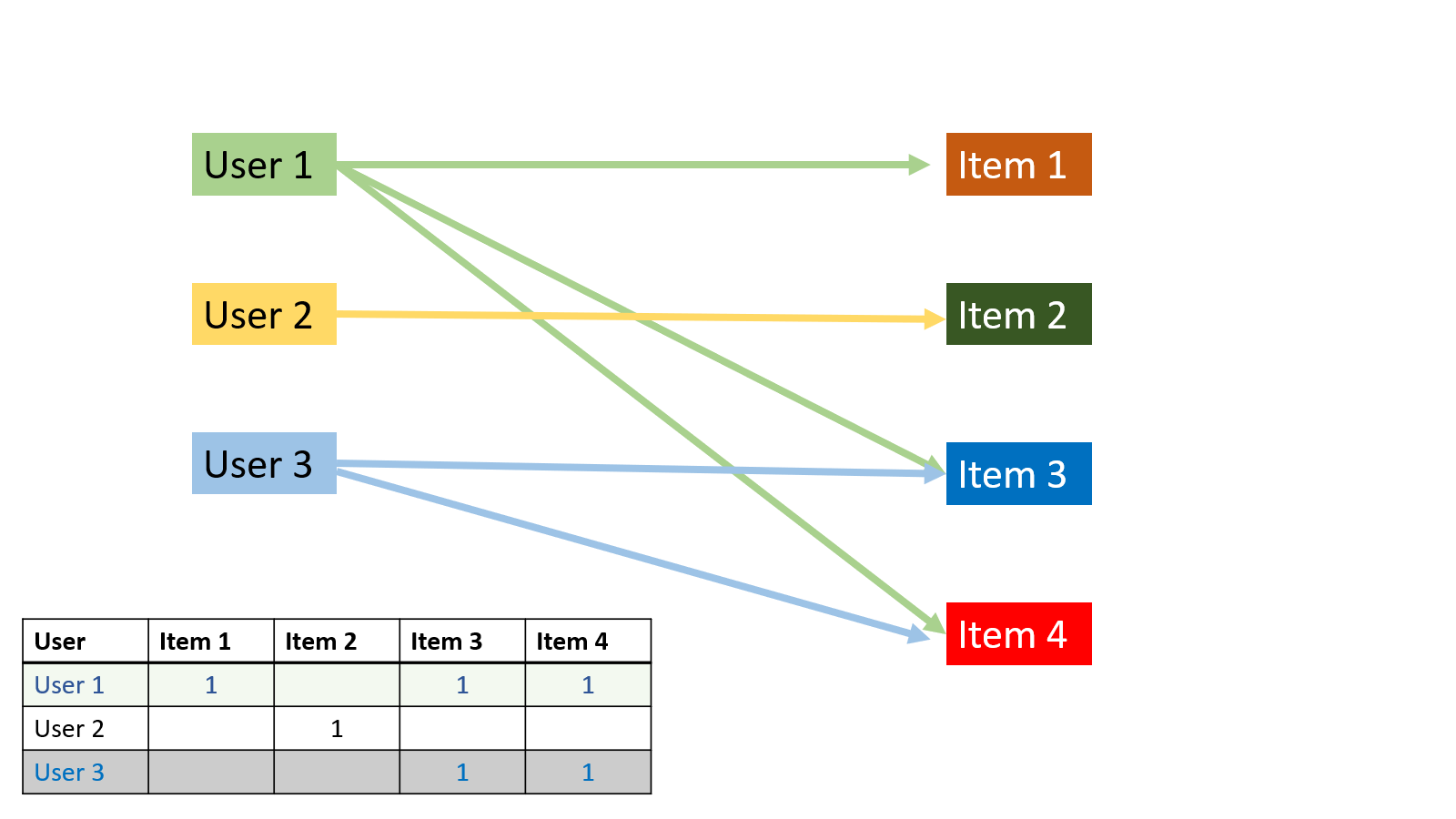
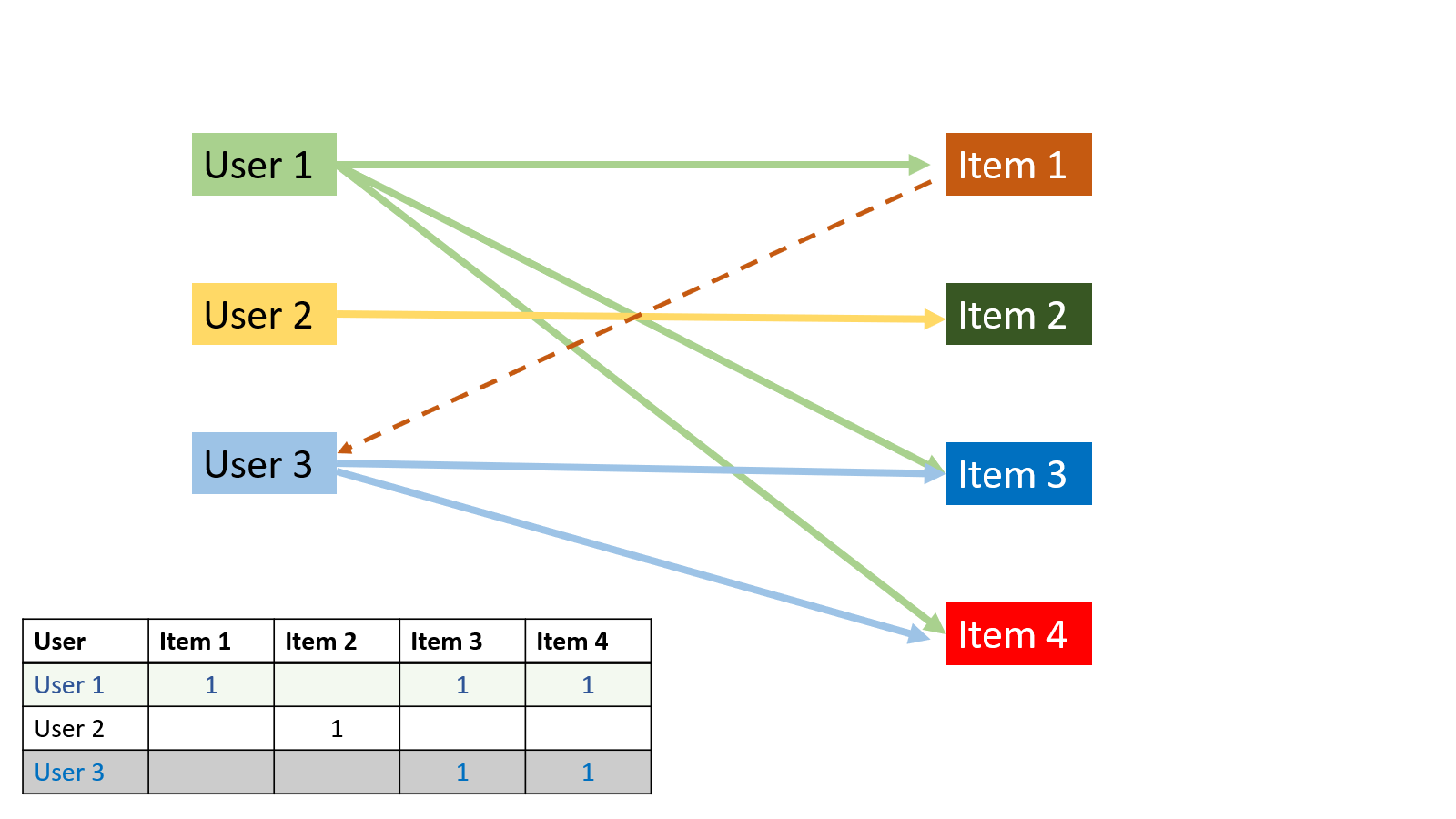
Item-based Collaborative Filtering
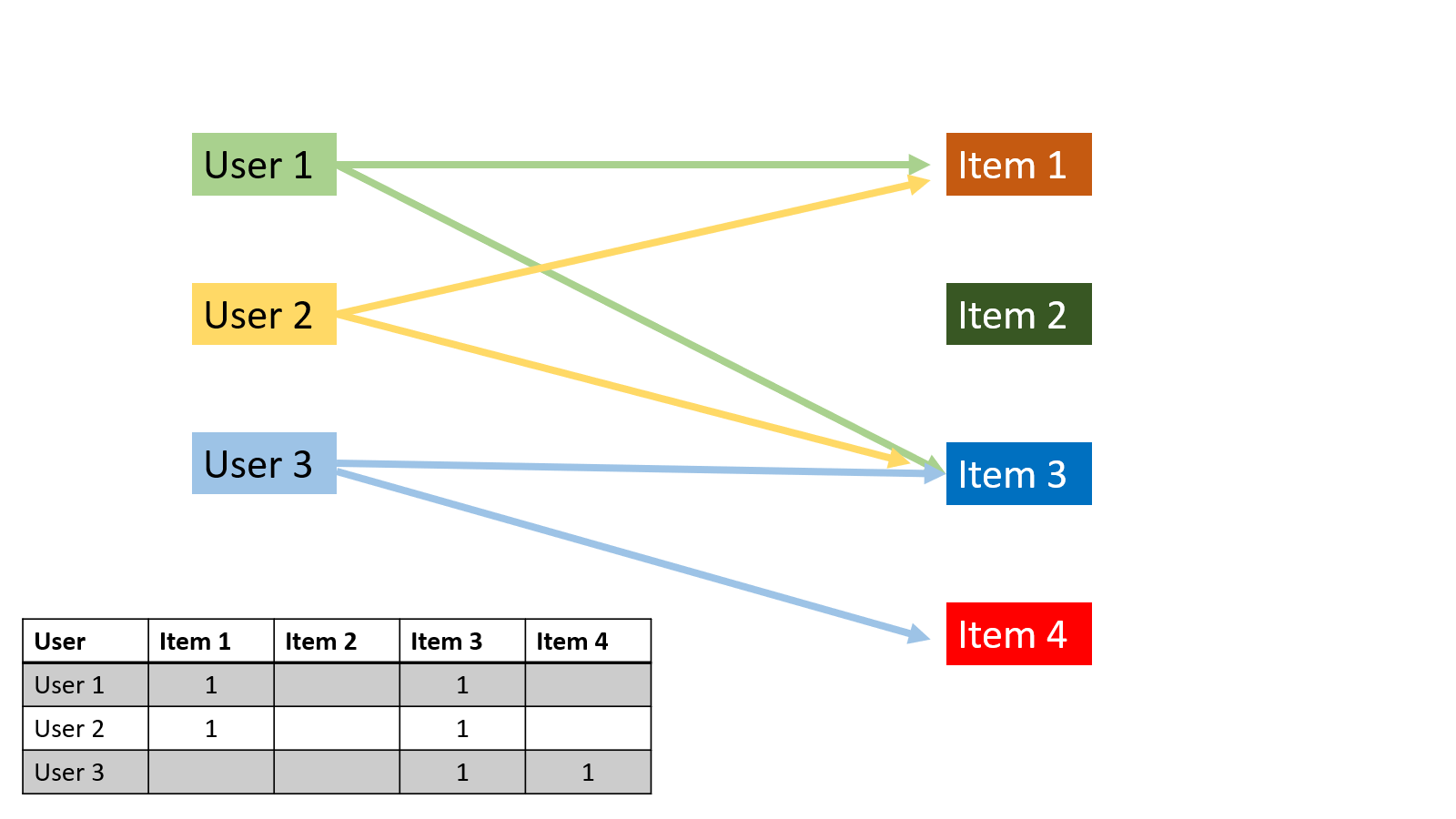
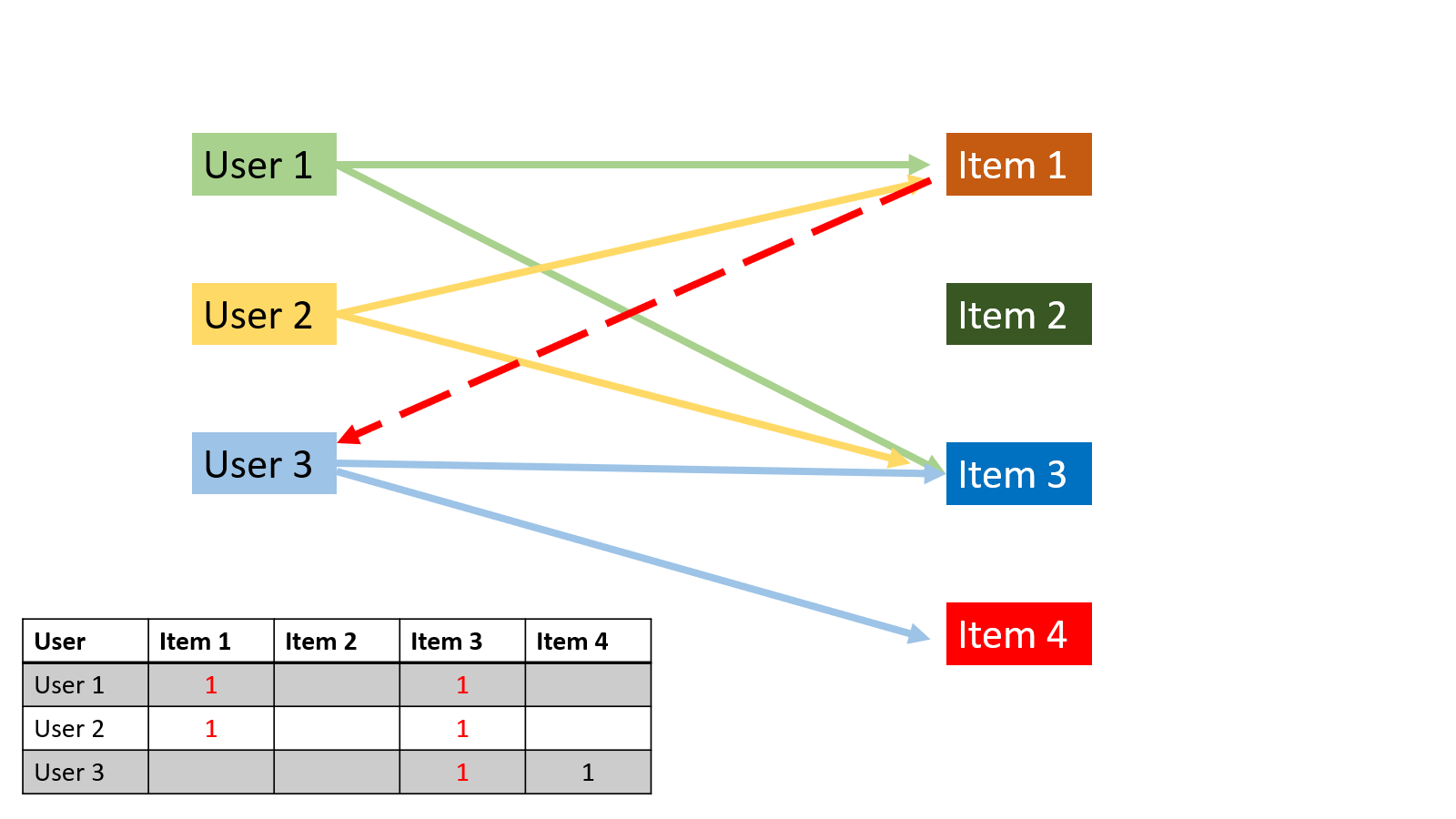
Example
User-based Collaborative Filtering: In-class calculations with example data
Step 1: Calculate user similarity
Pearson’s correlation similarity
Cosine similarity
Step 2: Locate nearest neighbor
Step 3: Determine rating prediction
Item-based Collaborative Filtering: In-class calculations with example data
Step 1: Calculate item similarity using user-item rating
Pearson’s correlation similarity
Cosine similarity
Step 2: Locate nearest neighbor
Step 3: Determine rating prediction
Collaborative Filtering
Strengths:
Effective at capturing complex patterns and preferences.
Can recommend items the user hasn’t explicitly rated or interacted with.
Weaknesses:
Struggles with new users or items (cold-start problem).
Requires large datasets to work well.
Types of Cold-Start Problems
New User Problem
When a new user joins a platform, the system has little or no data about their preferences or past interactions, making it difficult to recommend items accurately.
Example:
A new user signs up for Netflix. Since they haven’t watched or rated any shows or movies yet, Netflix has no data to personalize recommendations for them.
New Item Problem
When a new item (e.g., product, movie, or song) is added to the platform, there are no user interactions (ratings, clicks, purchases) with it. As a result, the system struggles to recommend this item to users because it doesn’t know which users might like it.
Example
An online bookstore adds a newly released book. Since no users have rated or bought the book yet, it’s challenging to recommend it to anyone.
New User-Item Combination Problem
Even for existing users and items, the system may encounter cold-start issues when it hasn’t observed any interaction between a specific user and a specific item. This occurs frequently when a system handles a large inventory.
Example:
A regular customer on an e-commerce site is shown a new category of products they haven’t browsed or purchased before, leaving the system unsure of how to make recommendations within this category.
The cold-start problem arises when the system lacks historical interaction data for users or items. Addressing it often requires combining multiple techniques, such as content-based filtering, onboarding processes, and hybrid models, to make relevant recommendations even with limited information.
Content-Based Filtering
Recommends items based on the characteristics or features of the items themselves (e.g., keywords, genres, tags) and matches them with user profiles.
Content-Based Filtering
Strengths:
Works well with new users, as long as item features are known.
Provides explainable recommendations (e.g., “You were recommended this movie because it has the same genre as another movie you liked”).
Weaknesses:
Limited to recommending items similar to those the user has already interacted with.
Harder to surprise the user with novel items.
Model-based methods
Aim to predict the likelihood of a user interacting with an item (e.g., rating, purchase, click) based on learned patterns from the data.
These models are designed to generalize from the existing user-item interactions, making predictions about future interactions
